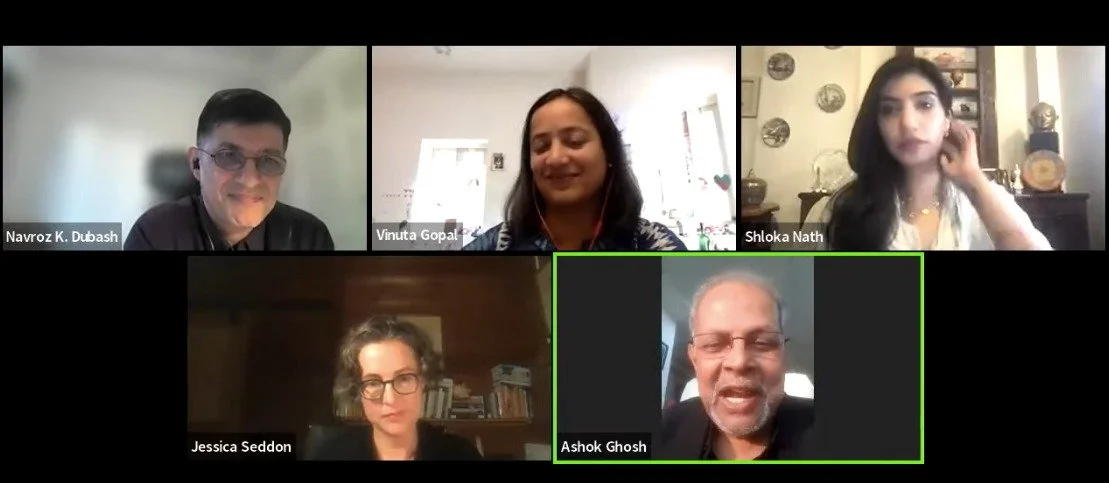India Air Pollution
A summary of CPR’s new research on the key institutional issues faced by pollution control boards in the Indo-Gangetic Plain, and panel discussion and media articles on the issue.
A new report report has shown us, yet again, that air pollution is a national emergency, and that we must reject the discourse centred solely around Delhi. We must eschew the techno-fixes currently dominating discourse and recognise the long-term transitions necessary to sustainably improve air quality.
In this piece, we unpack the Union Budget 2022, focusing on its implications for the current air quality regulatory framework and whether it gives impetus to new and ongoing interventions through adequate financial support. We find that the budget does little to improve air quality management in India.
India's nationwide, year-round air quality crisis requires a radical rethink. But how does parliamentary discourse frame this issue? How should India approach its air quality standards in light of the WHO making its global guidelines more stringent? What would "taking the long view" on air pollution strategy look like?
Air pollution is a complex societal problem. We must recognise this and focus our attention on long-term policy pathways with clear goals and timelines
While EVs can help improve local air quality, simply replacing existing vehicles with EVs will not be sufficient. EVs could not only lead to increased emissions upstream, but potentially also worsen non-exhaust emissions.
WHO guidelines are a clear nudge from the health sector towards the deep decarbonisation of our economy necessary to achieve both climate and air pollution goals. Placing public health at the centre of air quality management, coupled with a commitment to accountability and transparency in standard-setting, is the only way to ensure that the goals we set do not remain solely aspirational.
The recent Working Group 1 report of the Intergovernmental Panel on Climate Change finds that particulate matter (PM or simply, fine particles) have ‘masked’ the impact of greenhouse gas emissions generated over the last century by about a third. If air pollution mitigation ‘worsens’ global warming, must we rethink pollution controls at all? Not quite.
Forty years ago, India passed the Air Act, 1981- the first central legislation to tackle the air pollution crisis. What has it accomplished over the last four decades? Does the Air Act have enough teeth to deal with the crisis?
The air pollution crisis in India can only be solved through sustained political commitment, and robust institutions. Letting the ordinance lapse reflects poorly on the Centre’s commitment, and is a significant blow to the development of air quality governance in the country.
In 2019, air pollution was responsible for over 16.7 lakh deaths in India, more than ten times the lives lost due to COVID-19 so far. Did the budget address clean air adequately?
How does the Budget for 2021-22 address environmental concerns amidst the fallout from the COVID-19 pandemic?
CPR-ICEE picks the major climate, energy and environment stories of 2020 and what to look forward to in the new year.
A legal precedent that concretises links between air pollution and premature death and what this could mean for India’s air pollution discourse.
If governments were to raise awareness and disseminate information on air pollution the way they have done with COVID-19, what might that look like?
The annual November smog in the NCR frames the air pollution crisis — its scale, sources and solutions — in ways that undermine the long-term efforts needed.
Is the new CAQM the answer to the pleas of National Capital Region (NCR) citizens and an end to the winter airpocalypse?
The smog tower pilot project that the Government has envisaged is unjustifiably expensive, sets a bad precedent for pollution control efforts nationwide and raises questions about its evaluation.
This post answers why smog towers offer neither a scientific policy measure to tackle air pollution nor do they constitute an idea worth piloting.
As the country battles a public health crisis of staggering proportions, we must remind ourselves that we do not have the luxury of tackling air pollution at a later point.
This report analyses the outcomes of state actions in response to COVID-19 and its impact on the air quality discourse in India.
COVID-19 necessitates making health and social protection a priority. But we must not lose momentum on the strides made in tackling air pollution.
Could sustained, behavioural changes induced by COVID-19 alter the way we live and work?
Given the scale and scope of air pollution, the multiple sources involved, and the complexity of governance, this problem cannot be addressed without an actively involved executive.

























ETS is gaining traction as a market-based instrument to reduce industrial emissions. However, questions around transparency, reproducibility, state capacity, and policy design and clarity threaten the viability of this approach in the Indian context.